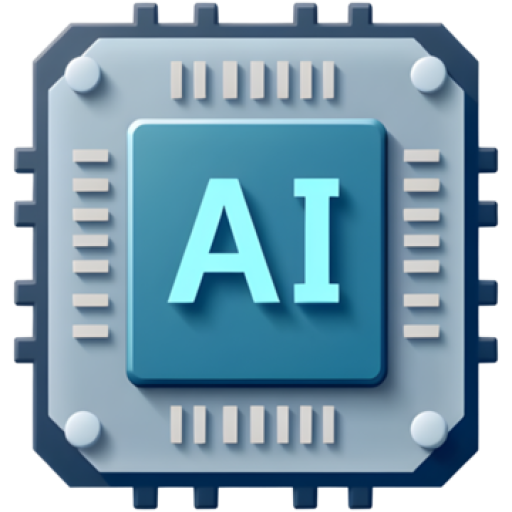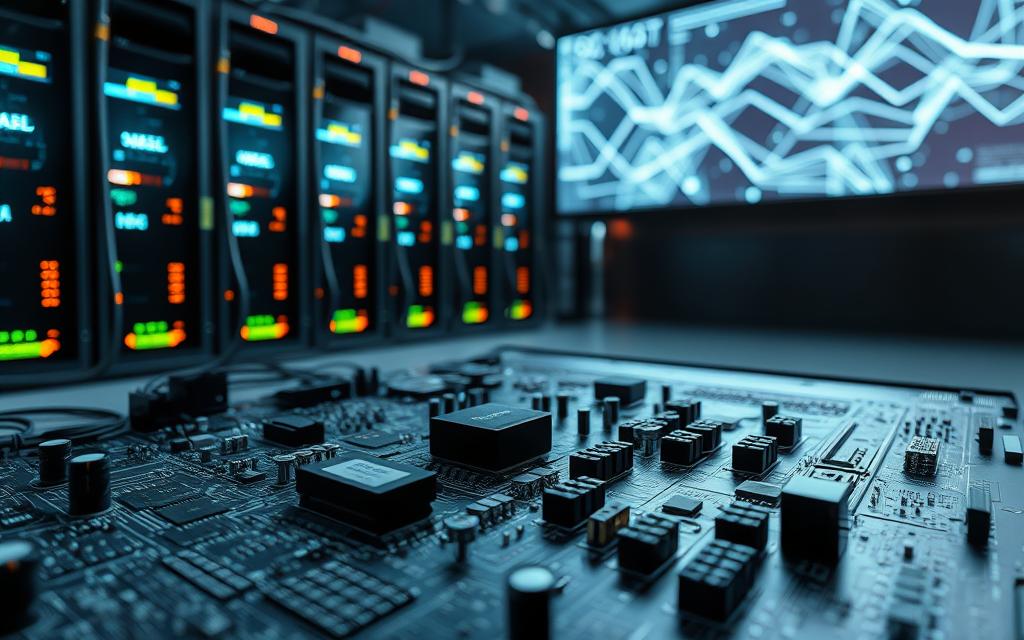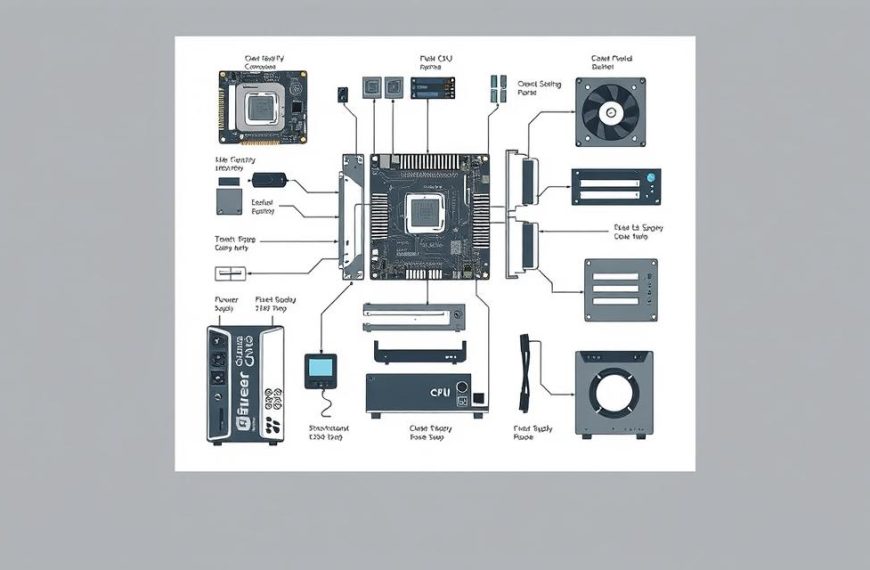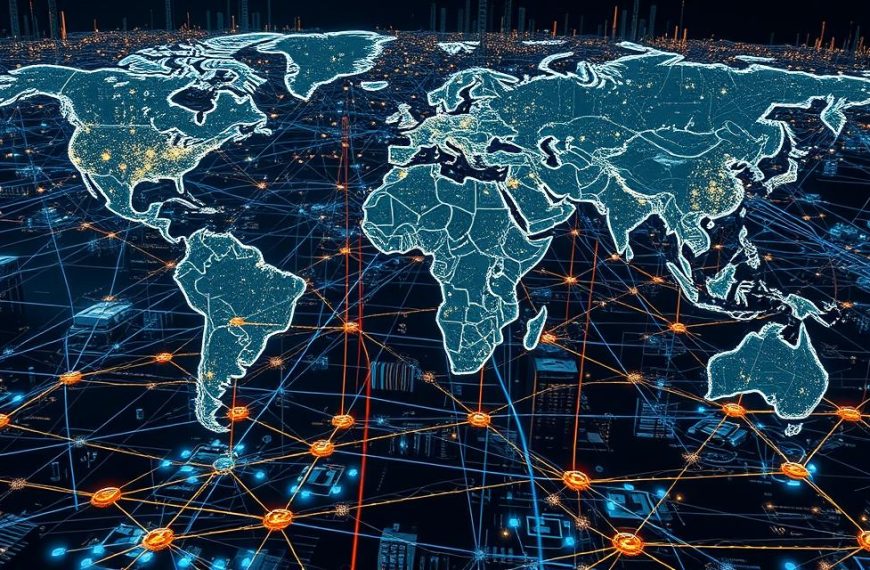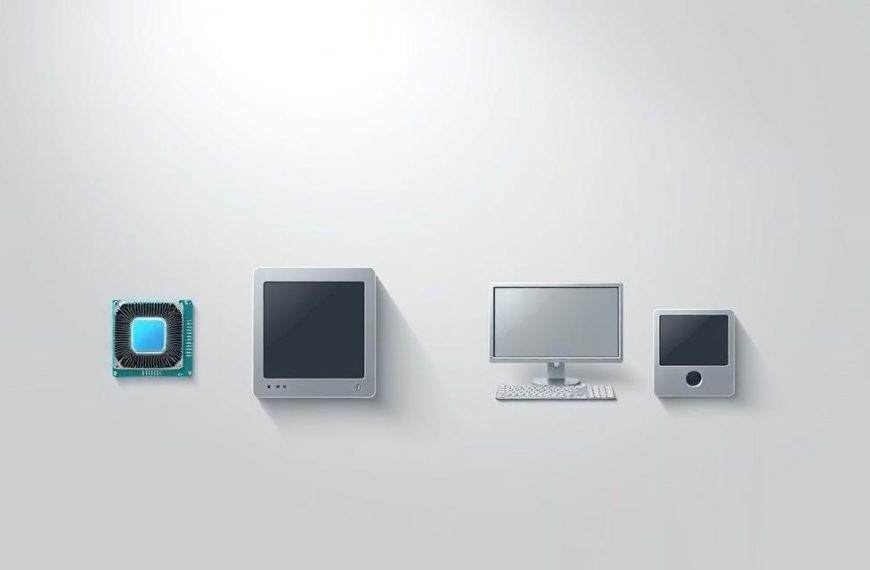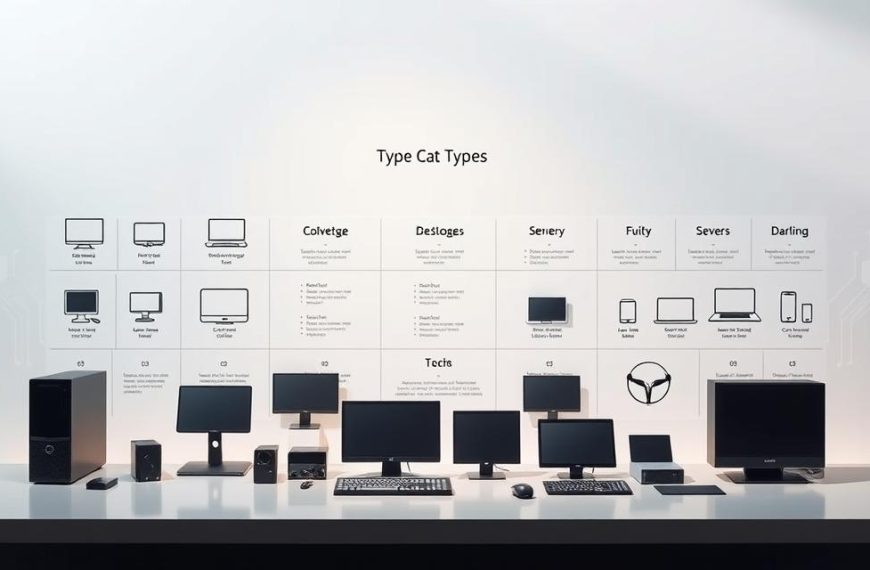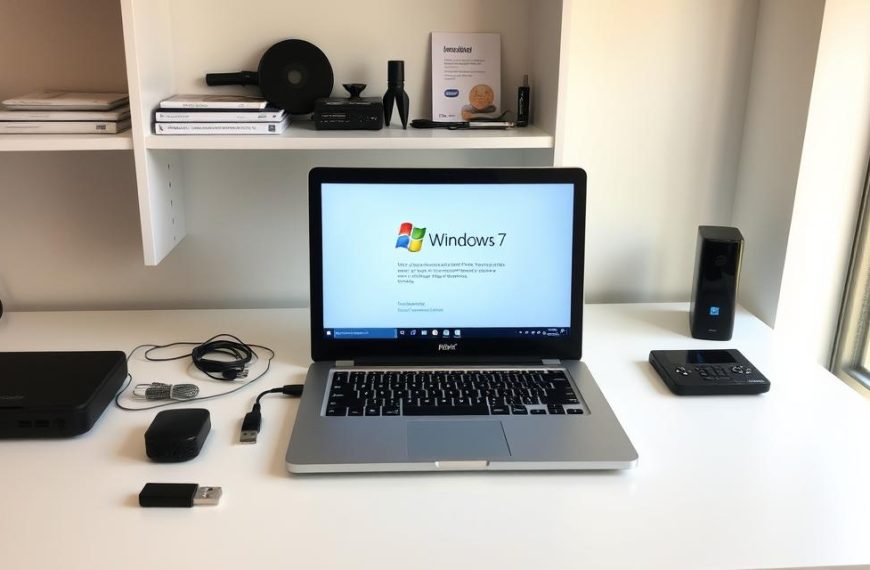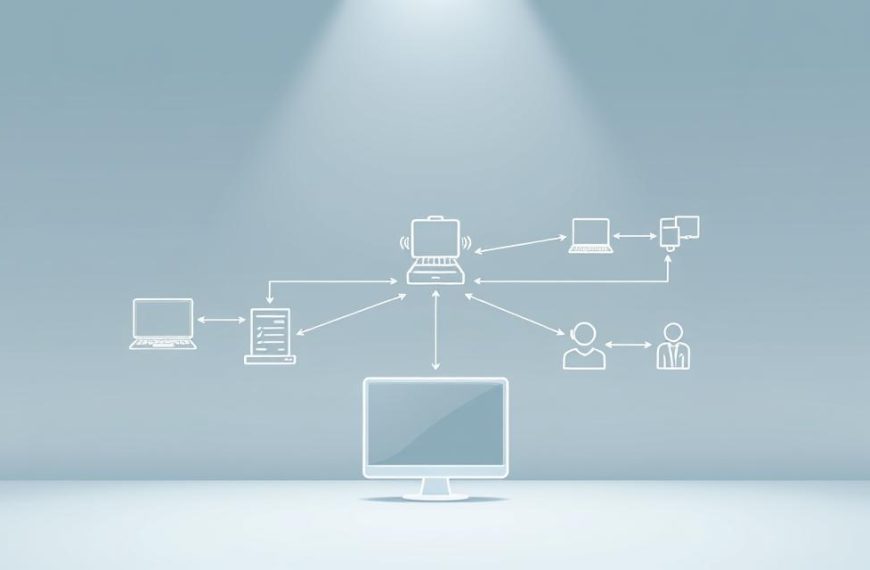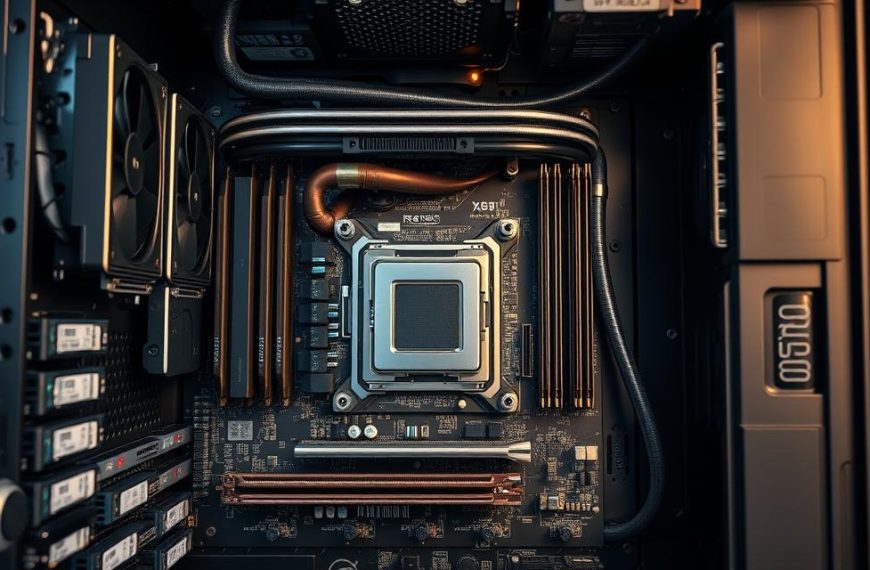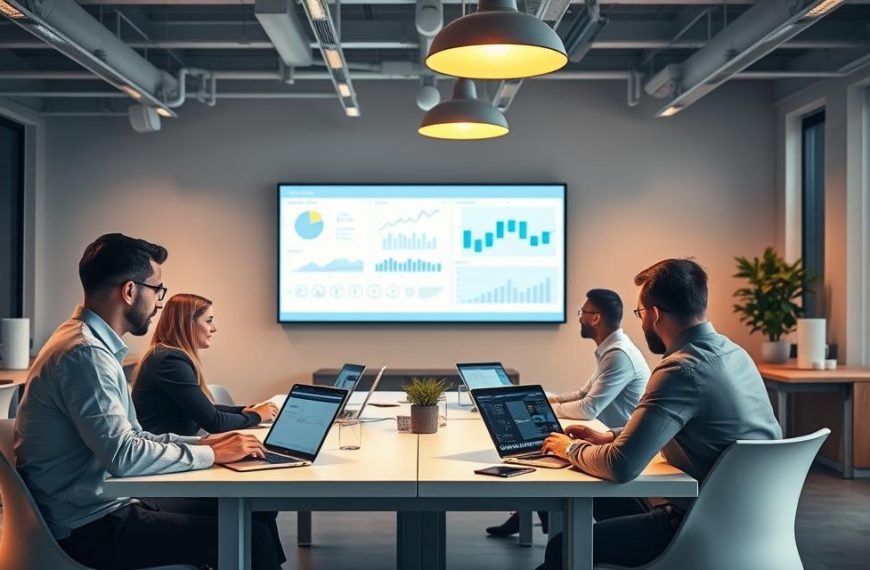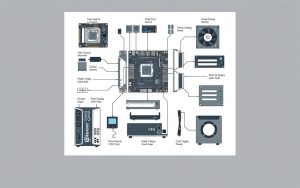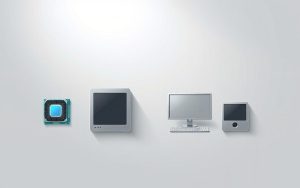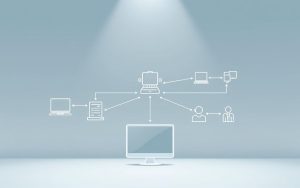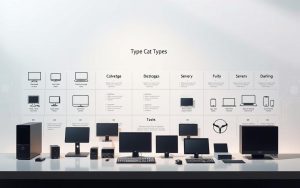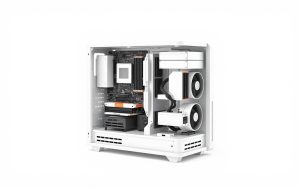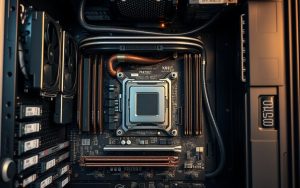Modern computing uses complex systems to turn raw data into useful results. A computer system combines hardware and software to process digital data accurately. These systems are key for everything from mobile apps to big business operations.
The system works in four main steps: getting input, processing it, showing the results, and storing data. Devices like keyboards collect data, processors work it out based on rules, and then displays or printers show the final results.
Effective system components work together well. The physical parts carry out orders from the software. This teamwork makes it possible to do everything from simple math to complex AI tasks. Today’s apps show how these processes drive new tech like AI and quick data analysis.
This look into modern computing processes covers the tech behind it, its use in different fields, and new trends in digital interaction. The next parts will go into each step and why they matter in real life.
Understanding What a Computer System Does
Modern computer systems are like smart bridges between what we want and what machines can do. They don’t just do math; they turn our wishes into digital actions. They balance being precise and easy to use.
Core Purpose of Digital Systems
At their heart, digital systems change unclear inputs into useful outputs. They do this through many steps that add meaning and value to the information.
Transforming Raw Data Into Actionable Information
Think about how spreadsheet software works with sales figures. It:
1. Takes in numbers
2. Uses formulas and logic
3. Creates charts and forecasts
This shows the IPOS cycle in action, making raw numbers into useful business insights.
Bridging Human Needs With Machine Capabilities
Today’s interfaces are much more than old punch cards and command lines. Voice-controlled assistants show how far we’ve come:
“The shift from mechanical switches to natural language processing represents one of computing’s most significant leaps in human-computer interaction.”
This connection lets people with little tech know-how use powerful computers.
Fundamental Operational Framework
Every computer system is a complex mix of physical parts and software rules. This mix follows strict rules but stays flexible for different tasks.
The Input-Process-Output-Storage Cycle
The IPOS cycle is key to how systems work:
Input: Keyboards, sensors, or networks collect data
Process: CPUs use algorithms and rules
Output: Screens show results or printers make physical copies
Storage: Hard drives and cloud servers keep data for later
Interaction Between Hardware and Software Components
This teamwork is like a symphony:
- Processors lead the operation
- Memory chips hold instructions
- Operating systems plan resources
Drivers and firmware make sure devices and software talk smoothly, making the system seem like one intelligent unit.
Input: The Gateway to Digital Processing
Modern computing starts where we interact with machines. Input mechanisms turn our actions and the world around us into digital signals. This stage is key to how well machines process information.
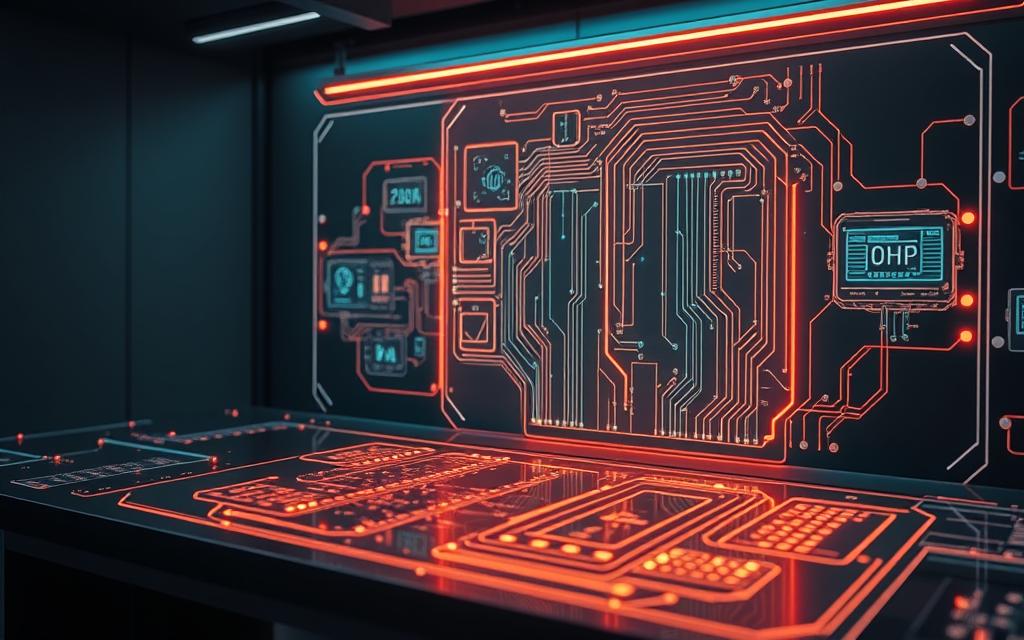
Diverse Input Mechanisms
Today, we use two main data input methods:
Manual Input Devices: Keyboards and Touchscreens
Keyboards are key for typing, while touchscreens are big in mobile use. These tools:
- Need us to use them directly
- Give us clear feedback through touch
- Let us change how they work with software
Automated Data Capture: Sensors and Scanners
More and more, we’re using machines to do the inputting:
- Thermal sensors check how hot things are
- RFID scanners track items
- Biometric readers check who we are
| Manual Devices | Automated Systems | Data Throughput |
|---|---|---|
| Keyboard | Temperature Sensor | 15-45 WPM |
| Touchscreen | Barcode Scanner | 100+ scans/minute |
| Graphics Tablet | Motion Detector | Continuous monitoring |
Data Acquisition Processes
Information gets changed a lot before it’s processed:
Analog-to-Digital Conversion Fundamentals
The ADC process has three main steps:
- Sampling: Taking snapshots of analog signals
- Quantisation: Giving digital values to these snapshots
- Encoding: Turning these values into binary
Error Checking in Data Entry Systems
Good input validation stops mistakes by:
- Checking if data is sent right
- Verifying data packets
- Testing sensor inputs
ATMs show how this works. They use touchscreens and bill sensors. They also check data many times to avoid mistakes.
Processing: The Computational Engine
Every digital device has a network of components working together. They turn raw data into useful results. This section looks at the key parts that make modern computing work, from the silicon level to system-wide coordination.
Central Processing Unit (CPU) Operations
The CPU is the brain of a computer. It does billions of calculations every second. Its design is key to how fast devices respond and handle complex tasks.
Instruction Execution Cycle: Fetch-Decode-Execute
Every task goes through three stages:
- Fetch: Gets instructions from memory
- Decode: Figures out what the command means
- Execute: Does the task
Today’s processors do this cycle in nanoseconds. This makes them very responsive.
Multi-Core Processing Architectures
Modern CPUs have many processing units on one chip. This lets them do tasks in parallel:
| Cores | Single-Core | Quad-Core |
|---|---|---|
| Tasks/Hour | 120 | 480 |
| Power Usage | 35W | 45W |
| Heat Output | High | Medium |
Multi-core designs make tasks like video editing and scientific simulations faster. They also use less energy.
Memory Management Essentials
Good memory hierarchy organisation is key. It makes data access fast across different storage levels. Systems balance speed, capacity, and cost by allocating memory wisely.
RAM vs ROM: Temporary vs Permanent Storage
| Type | RAM | ROM |
|---|---|---|
| Volatility | Temporary | Permanent |
| Speed | ~17GB/s | ~550MB/s |
| Typical Size | 8–64GB | 256GB–2TB |
RAM handles active tasks, while ROM stores firmware and boot instructions.
Cache Memory Optimisation Techniques
Modern systems use three-tier caching:
- L1: 64KB per core (fastest access)
- L2: 256KB–1MB (balanced speed/capacity)
- L3: 8–32MB (shared between cores)
Smart prefetching algorithms guess what data is needed. This cuts latency by 40–60%.
Operating System Coordination
The OS is like a conductor for hardware and software. It manages resources well. Advanced scheduling makes sure everyone gets a fair share.
Process Scheduling Algorithms
Popular methods include:
- Round Robin: Gives equal time to all tasks
- Priority-Based: Urgent tasks get priority
- Multilevel Feedback: Adjusts priority based on performance
These systems stop one task from taking too much and keep the system stable.
Resource Allocation Strategies
Modern OSes use dynamic allocation:
“Memory compression techniques allow systems to handle 30% more concurrent applications without hardware upgrades.”
Real-time tools adjust CPU power and memory based on demand. This optimises performance during busy times.
Output: Delivering Processed Results
After processing data, computers turn digital signals into formats we can understand. They use special output devices for this. These devices help us use the results in three main ways: visual displays, physical copies, and sound.
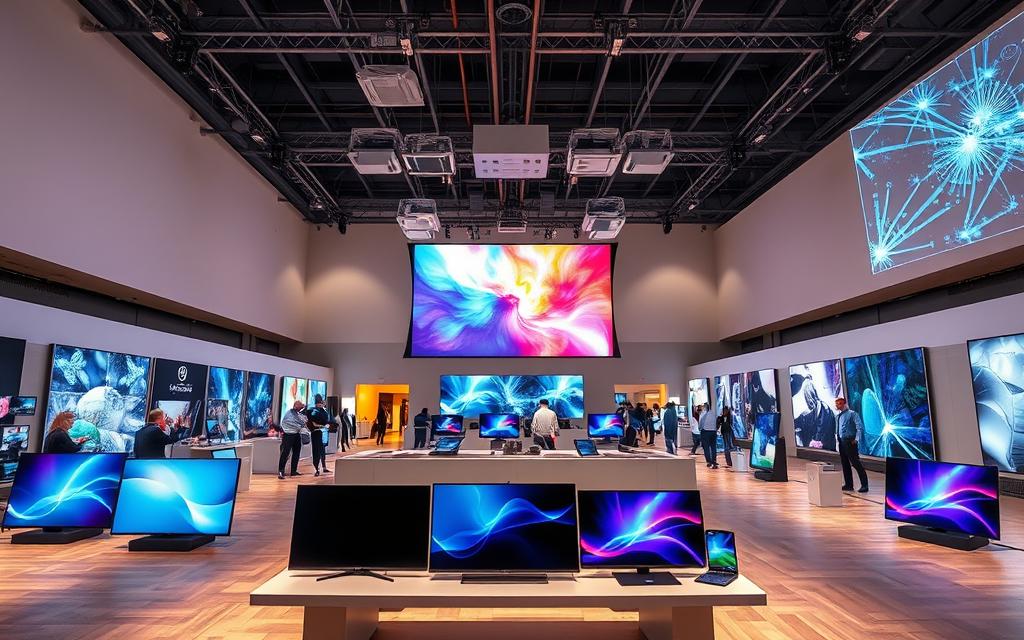
Visual Output Systems
Today’s displays change electrical signals into images we can see. They use two main display technologies:
LCD vs OLED
| Feature | LCD | OLED |
|---|---|---|
| Backlight | Required | Self-emissive |
| Colour Accuracy | 92% sRGB | 98% DCI-P3 |
| Power Use | Higher | Lower for dark content |
LCD screens are common in offices because they’re cheaper. But, OLED panels are used in top smartphones for their better contrast.
Resolution and Refresh Rate Considerations
4K displays (3840×2160 pixels) make text clearer for design work. Gaming monitors benefit from 144Hz refresh rates. Colour graders often choose 10-bit colour depth over pixel density.
Physical Output Mechanisms
Physical devices create lasting records or objects:
3D Printing Technologies
FDM printers make objects by layering melted plastic. Industrial printers now achieve 16-micron precision, even for aerospace parts.
Conventional Printing Systems
Laser printers are fast, printing up to 50 pages per minute. Inkjet printers are great for photos, thanks to their tiny droplets.
Auditory Output Solutions
Modern audio processing systems make sound more realistic:
Digital Sound Synthesis
Wave-table synthesis mixes samples for real instrument sounds. Physical modelling simulates acoustic spaces in real-time.
Surround Sound Implementations
Dolby Atmos uses height channels for a full sound field. Object-based audio lets sounds move freely in 3D space.
“The leap from stereo to spatial audio is the biggest in sound tech in decades.”
These systems help computers share results through light, matter, and sound. They turn complex data into useful information.
Storage and Communication: Sustaining Digital Operations
Modern computer systems need two key things to work well: keeping data safe and sharing it easily. These steps help keep digital work going smoothly, from quick tasks to global teamwork.
Data Retention Hierarchies
Digital systems use a storage hierarchy with different levels. This system balances speed, space, and cost. It helps devices focus on data they use often and store less important info elsewhere.
Primary vs Secondary Storage Comparisons
Primary storage, like RAM, gives fast access but loses data when turned off. Secondary storage, such as SSDs and HDDs, keeps data safe and has more room. Here’s how they compare:
| Feature | Primary Storage | Secondary Storage |
|---|---|---|
| Access Speed | Nanosecond response | Millisecond response |
| Capacity Range | 4GB-128GB | 256GB-20TB+ |
| Cost per GB | £2.50-£8 | £0.02-£0.20 |
Cloud Storage Architectures
Cloud computing changes how we keep data safe with its network of servers. Today’s systems use:
- Virtualised resource pools
- Geo-redundant backups
- Automated scaling mechanisms
This setup lets businesses change their storage needs easily. It also keeps data safe with 99.999% uptime in top platforms.
Information Exchange Protocols
Good data sharing needs network protocols that let devices talk to each other. These “languages” make sure different hardware and software can work together.
“Protocol standardisation has reduced cross-platform communication errors by 73% in five years.”
Network Communication Standards
Wired systems mostly use Ethernet (IEEE 802.3), while wireless ones follow Wi-Fi (IEEE 802.11). Key updates include:
- 10 Gigabit Ethernet in big networks
- Wi-Fi 6’s 9.6 Gbps top speed
- Fibre-optic backbone for networks
Wireless Transmission Technologies
Modern cloud computing uses many wireless options:
- 5G cellular networks (up to 10 Gbps)
- Bluetooth Low Energy for IoT devices
- Li-Fi experimental light-based transfers
These technologies make sharing data in real-time possible. They work well in smart factories and remote healthcare, with very low latency.
Conclusion
Computer systems manage complex tasks through input, processing, output, and storage. This summary shows how parts work together to turn data into useful information. From keyboards to GPUs, each part follows rules set by experts like those at Intel and AMD.
The shift from old mechanical calculators to cloud-based systems shows how digital processes have grown. Early systems like ENIAC needed manual changes, but now Windows and Linux handle things automatically. This change shows how systems aim to work better with more cores and faster storage.
Future tech like quantum computing and neural networks will challenge current systems. As AI meets traditional tech, designers must balance speed and energy use. This shows the need for systems that work well with new and old tech.
Knowing how systems work helps users choose the right devices and improve workflows. Whether picking gaming PCs or business servers, understanding system basics is key in today’s tech world.
